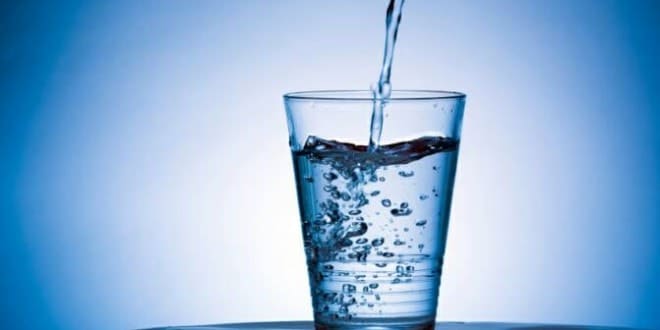Water Hardness and Alkalinity
It may be that your water hardness and alkalinity are perfect for discus but unfortunately this is not always the case. It is far easier to adjust hardness and alkalinity upwards as when keeping hard-water fishes, but lowering these values is by no means impossible. It simply involves another step in the water conditioning process. Total hardness (general hardness) is the sum combination of carbonate and noncarbonate hardness of your water. Total hardness is measured as, degrees, dH, or ppm (parts per million). One dH is 17.9 ppm. How total hardness is expressed depends upon the author and his orientation. I prefer dH simply because as a discuskeeper, I like to see smaller numbers when I am measuring water hardness! If I were keeping African cichlids I might prefer to measure my water’s hardness in ppm. Total hardness is usually not a big issue in keeping discus; alkalinity is a far more important factor in the breeding of discus. Alkalinity is sometimes referred to as carbonate hardness(KH)or buffering capacity. Alkalinity is the important factor in breeding discus and controlling the pH of the water. Alkalinity refers to the level of calcium, carbonate and bicarbonate in the water. It is measured in KH or mg/L CaCo3 or parts per million. One milligram per liter (mg/L) is the equivalent of one part per million. Soft water is 3dH and 0 to 50 mg/L CaCo3; medium soft water is 3 to 6 dH and 50 to 100 mg/L CaCo3; slightly hard water is 6 to 12 dH and 100 to 200 mg/L CaCo3; moderately hard water is 12 to 18 dH and 200 to 300 mg/L CaCo3; hard water is over 18 dH and over 300 mg/L CaCo3. The values for general hardness and alkalinity given above do not always match each other. It is entirely possible to have a higher reading of general hardness and a lower reading of alkalinity. The lower reading for alkalinity is the more desirable for discus water. Discus will do quite well in slightly to moderately hard water. In fact, many breeders routinely keep their fish in these values to ensure proper development of the young fish, but for development of the eggs, soft to moderately soft water, particularly concerning alkalinity is critical. Therefore, it is not necessary to drastically adjust the general hardness or alkalinity when you first start to keep discus unless the values are very high.
Reducing Water Hardness
It is best to test the pH and alkalinity of your water before making any investments in reverse osmosis or deionization equipment. As long as the general hardness and alkalinity are in the ranges mentioned above, you should have no trouble. Driftwood and peat will both contribute to softening of the water. You may find that your slightly to moderately hard water will respond very nicely to the introduction of a piece of drift wood and a bag of peat in your filter! Beyond this, or if you are at the stage where you are seriously considering breeding your discus, you can look into reverse osmosis or deionization pretreatment of your water. Both of these methods remove all trace of water hardness and a very high percentage of the impurities in the water, through extremely fine straining action in the R/O and specific resins in the DI. Water that has been handled in this fashion is stripped of necessary trace elements and must be reconstituted before use in the aquarium. Reconstituting salts are available commercially. Some authorities recommend mixing the water with 5% tapwater, but if your tapwater contains toxins, this is not the best method by any means. Household water softeners used in many homes are entirely unsuitable for preparing water for discus. The resins in these units exchange hardness ions for sodium ions and additional sodium is contraindicated in keeping discus.
About pH
Discus are very particular about pH. Keep your pH below 7 and above 5.5. The ideal pH for discus is 6. At pH levels above 7, discus are stressed. Below 5.5, the pH is inclined to plunge rapidly, so I find 6 to be comfortable for both the fish and the fishkeeper. Alkalinity and pH are closely related. Hard water naturally tends to be alkaline. Soft water naturally tends to be acidic. This is because of the buffering capacity. Buffering capacity represents the presence of alkalinity (carbonate hardness) and the ability of the water to maintain high pH. It is a chemical balancing act. Just enough carbonate hardness and the pH remains at the desired level, too much carbonate hardness and the pH will remain high, too little carbonate hardness and the pH will crash. Maintain your carbonate hardness at around 10 or 15 dH and you should have no problems with pH. Check your pH with every water change until you are able to get a feel for how your water behaves. If you notice that the pH drops quickly, you must add back carbonate. If your pH resists change to lower values, you must remove carbonate. There are many methods of lowering your pH, most with some form of phosphoric acid, from drops to powders, but one of the gentlest and safest methods is through the use of peat moss. Because the peat adsorbs carbonates and acidifies the water, you should be able to maintain desirable pH and carbonate levels through the use of peat alone.
Water Hardness
Total Water Hardness, or General Hardness (GH), which is measured by most water test kits, consists of Temporary Hardness plus Permament Hardness.
Temporary Hardness, also known as Carbonate Hardness (KH) is a measure of the bicarbonates precipitated upon boiling, and consists mostly of Calcium and Magnesium salts. This is the “scale” that accumulates inside a teakettle or pot. It is Carbonate Hardness (KH) which determines the pH buffering capacity of water
Permanent Hardness refers to sulphate and chloride salts, which do not precipitate upon boiling.
To confuse the issue farther, there are at least four different scales of hardness in general use: US, Clark (UK), German (dH), and French (fH). The table which accompanies this article offers a comparison among them. All values are calculated in equivalent CaCo3 in milligrams per liter.
CLASSIFICATION OF WATER HARDNESS
The amount of hardness is sometimes expressed by descriptive words. The following table shows how these descriptions may be related to the numerical value of the hardness in common units.
Description |
Hardness in mg/l as
|
Hardness in mg/l as
|
SoftModerately softSlightly hardModerately hardHardVery hard |
0 – 2020 – 4040 – 6060 – 8080 – 120Over 120 |
0 – 5050 – 100100 – 150150 – 200200 – 300Over 300 |
(mg/l = milligrammes per litre = 1 part per million)
CONVERSION OF WATER HARDNESS UNITS |
||||||
Water HardnessUnitDifinition |
International recommendedmmol/litre |
Physical measuresmval/litre |
America & statesPPM |
Englishoe |
Frenchof |
GermanodH |
100mg CaCO3per 1000 ml water |
28 mg CaO or 50 mg CaCO3per 1000 ml water |
1 part CaCO3 per million = 1 mg CaCO3per 1000 ml water |
1 grainCaCO3 per gallon= 14,3 mg CaCO3 per 1000 ml water |
10 mg/ CaCO3per 1000 ml water |
10 mg/CaOper 1000 ml water |
|
1 mmol/litre1 mval/litre1 PPM1 Oe1 Of1 OdH |
10,50,010,14290,100,1786 |
210,020,2850,200,357 |
10050114,2910,0017,86 |
7,03,50,07010,7001,250 |
10,005,000,101,42911,786 |
5,62,80,0560,79990,55991 |

